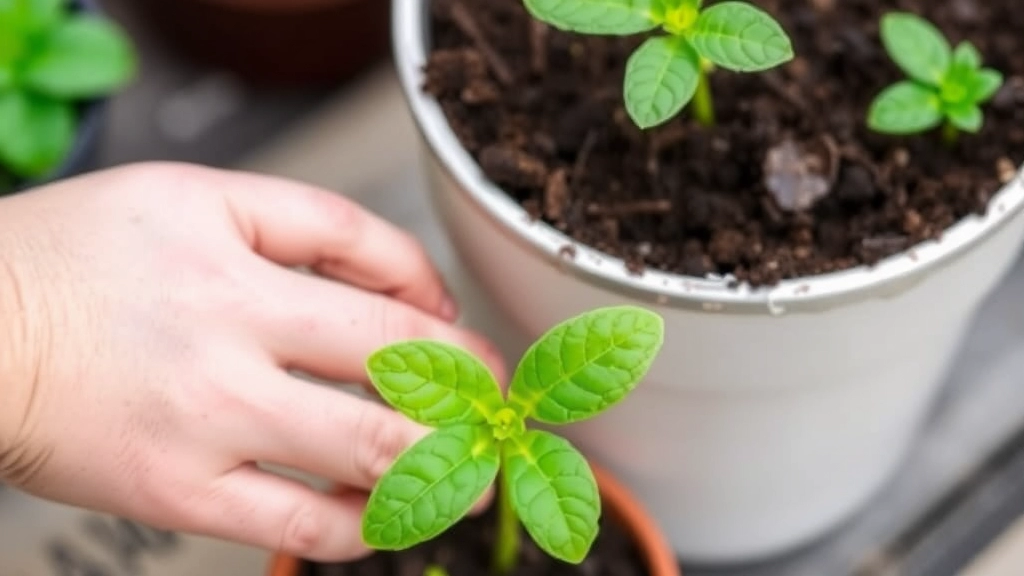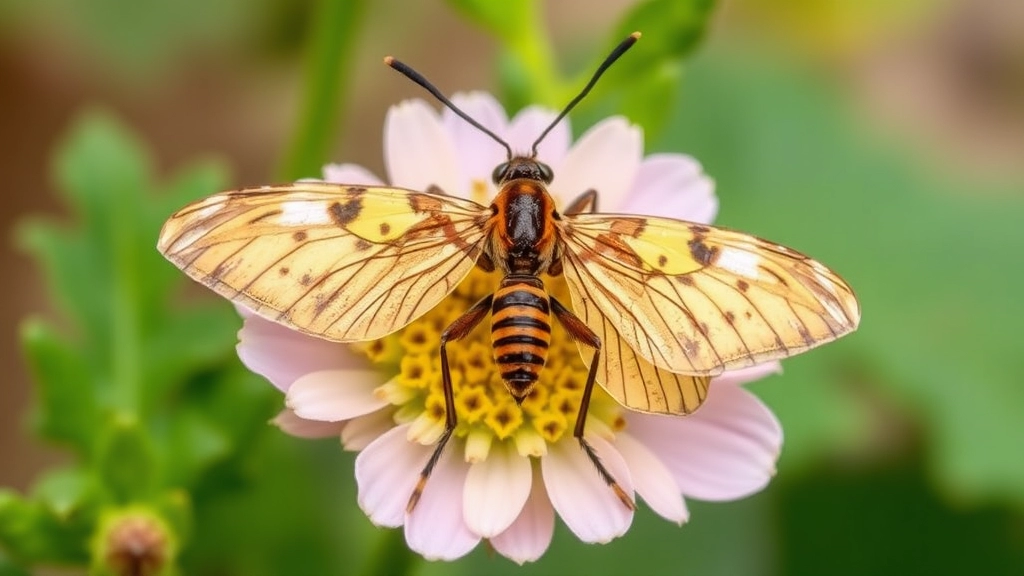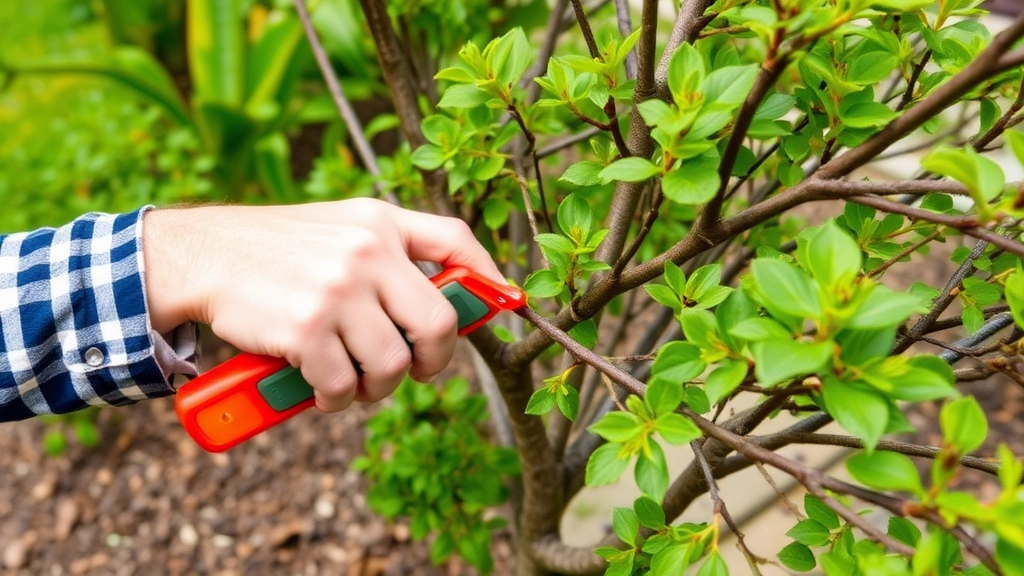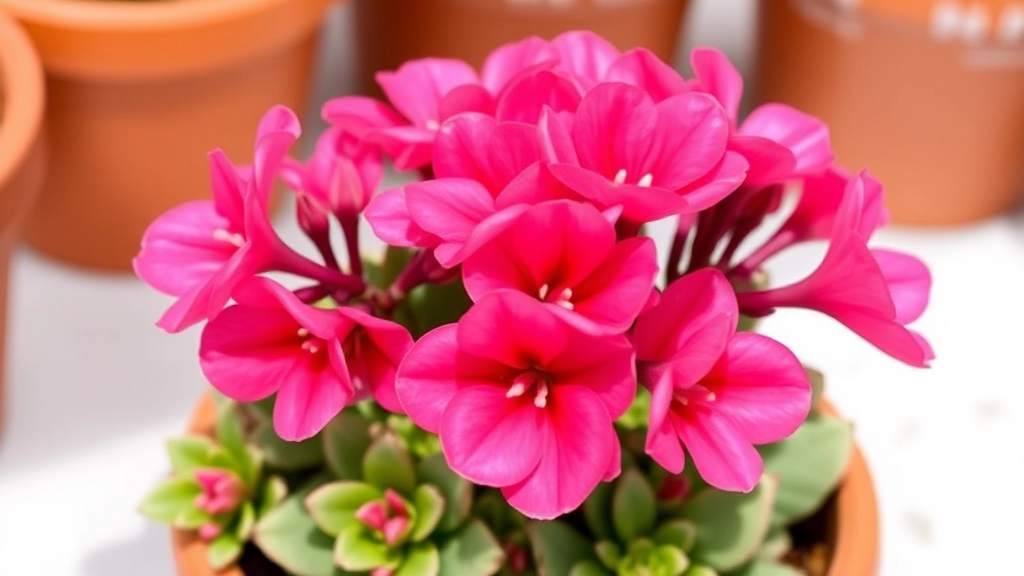Pink Kalanchoe Succulent
Looking to add a touch of vibrant pink to your succulent collection? The Pink Kalanchoe Succulent, also known as Kalanchoe ‘Pink Butterflies’, is a stunning choice. This plant is not only visually appealing with its butterfly-like pink plantlets but also relatively easy to care for. Whether you’re a seasoned gardener or just starting out, understanding the best practices for watering, soil, and light conditions can make all the difference in keeping your Pink Kalanchoe thriving.
Propagation
When it comes to propagation, the Pink Kalanchoe offers a rewarding experience. You can propagate this succulent through leaf plantlets or stem cuttings, ensuring you have plenty of these beauties to share or expand your garden. Additionally, being aware of common pests and diseases, and knowing how to prevent and treat them, will help maintain the health and longevity of your plant.
Care Tips
Dive into this guide to learn everything you need to know about caring for your Pink Kalanchoe Succulent.
Best Practices for Watering Your Pink Kalanchoe
Are you struggling to keep your Pink Kalanchoe healthy due to overwatering or underwatering? You’re not alone. Many plant enthusiasts face the same dilemma, but understanding the right watering practices can make all the difference.
Understanding Water Needs
Pink Kalanchoe, like many succulents, thrives on a careful balance of moisture. Here are some key points to keep in mind:
- Soil Moisture Check: Always check the top inch of soil. If it feels dry, it’s time to water. If it’s still moist, wait a few days.
- Watering Frequency: During the growing season (spring and summer), water every 2-3 weeks. In the dormant period (autumn and winter), reduce this to once a month.
- Watering Method: Water deeply but infrequently. Ensure that excess water drains out of the pot. This prevents root rot, a common issue with Kalanchoe.
Signs of Overwatering and Underwatering
Recognising the signs of overwatering and underwatering can save your plant from distress:
- Overwatering: Yellowing leaves, mushy stems, and a sour smell from the soil are indicators that your plant is getting too much water.
- Underwatering: Leaves may appear shrivelled or wrinkled, indicating that your plant is thirsty.
Choosing the Right Water
The type of water you use can also impact your plant’s health:
Optimal Soil and Potting Mix for Healthy Growth

So, you’ve got your Pink Kalanchoe, and now you’re wondering: what’s the best soil to keep this beauty thriving?
Let’s dive into the nitty-gritty of potting mixes that work wonders for your succulent.
The Right Soil Mix
Pink Kalanchoe loves well-draining soil. Here’s what you should look for:
- Cactus Mix: A pre-made cactus or succulent mix is fantastic.
- DIY Mix: If you’re feeling crafty, mix:
- 50% potting soil
- 25% perlite or coarse sand
- 25% pumice or gravel
This combo ensures your plant won’t sit in water, which can lead to root rot.
Why Drainage Matters
You might be wondering why drainage is such a big deal.
Succulents like Pink Kalanchoe store water in their leaves. If the roots are soggy, they can’t breathe, leading to decay.
Pot Selection
Choosing the right pot is just as crucial. Here’s what I recommend:
- Terracotta Pots: These are great because they absorb moisture and allow air circulation.
- Drainage Holes: Always opt for pots with holes at the bottom. No holes? No good!
Regular Check-ups
Keep an eye on your soil.
If it’s compacted or has a funky smell, it might be time for a refresh.
Propagation Methods: Leaf Plantlets and Stem Cuttings
When it comes to expanding your collection of Pink Kalanchoe, propagation is a rewarding and straightforward process. Many plant enthusiasts often wonder about the best methods to propagate their beloved succulents.
Leaf Plantlets
One of the most popular methods for propagating Pink Kalanchoe is through leaf plantlets. Here’s how to do it:
- Select a Healthy Leaf: Choose a plump, healthy leaf from the parent plant.
- Remove the Leaf: Gently twist the leaf off, ensuring you have a clean break.
- Allow to Callous: Place the leaf on a dry surface for a few days. This allows the cut end to callous over, which helps prevent rot.
- Prepare Soil: Use a well-draining potting mix, ideally a succulent or cactus blend.
- Plant the Leaf: Once the leaf has calloused, place it on top of the soil without burying it.
- Water Sparingly: Mist the soil lightly to keep it moist but not soggy.
Within a few weeks, you should see tiny plantlets forming at the base of the leaf.
Stem Cuttings
Another effective method is using stem cuttings. This technique is particularly useful if you want to create a bushier plant.
- Choose a Healthy Stem: Look for a robust stem with several leaves.
- Cut the Stem: Use a clean, sharp knife or scissors to cut a section of the stem, ideally 3-4 inches long.
- Let it Callous: Just like with leaf cuttings, let the cut end of the stem dry for a few days.
- Plant the Cutting: Insert the calloused end into the soil, burying it about an inch deep.
- Water Carefully: Water the soil lightly, ensuring it remains moist but not overly wet.
After a few weeks, you should notice new growth, indicating that your cutting has successfully rooted.
For more detailed guidance, you can refer to our complete guide on propagating Kalanchoe Blossfeldiana cuttings and learn about the care tips for Kalanchoe succulents with pink flowers to ensure healthy growth.
Common Pests and Diseases: How to Prevent and Treat

As we delve deeper into the care of your Pink Kalanchoe, it’s crucial to address the common pests and diseases that can threaten its health.
Identifying Common Pests
Many plant enthusiasts worry about pests that can invade their beloved Kalanchoe. Here are the most common culprits:
- Mealybugs: These small, white, cotton-like insects often hide in the leaf axils and stem joints.
- Aphids: Tiny green or black bugs that cluster on new growth.
- Spider Mites: Look for fine webbing on the undersides of leaves, especially in dry conditions.
- Scale Insects: These appear as small, brown bumps on stems and leaves.
Preventive Measures
Prevention is key to maintaining a healthy plant. Here are some effective strategies:
- Regular Inspections: Check your plant weekly for any signs of pests.
- Clean Leaves: Wipe leaves with a damp cloth to remove dust and potential pests.
- Proper Airflow: Ensure your Kalanchoe is not overcrowded, allowing for good air circulation.
- Healthy Conditions: Maintain optimal light and watering conditions, as stressed plants are more susceptible to infestations.
Treatment Options
If you do discover pests, don’t panic. Here are some treatment methods:
- Insecticidal Soap: Spray directly on the affected areas, ensuring thorough coverage.
- Neem Oil: This natural pesticide works well against various pests. Dilute and apply as per instructions.
- Manual Removal: For larger infestations, you can physically remove pests with a cotton swab dipped in alcohol.
- Isolation: If a plant is heavily infested, consider isolating it to prevent spreading to other plants.
Diseases to Watch Out For
While pests can be a major concern, diseases can also affect your Kalanchoe. Common issues include:
- Root Rot: Caused by overwatering, leading to wilting and yellowing leaves.
- Powdery Mildew: A fungal disease that appears as white spots on leaves, often due to high humidity.
Prevention and Treatment for Diseases
To keep your Kalanchoe healthy, implement these practices:
- Water Wisely: Allow the soil to dry out between watering to prevent root rot.
- Good Drainage: Use pots with drainage holes and well-draining soil.
- Fungicides: For powdery mildew, consider applying a fungicide, following the product instructions carefully.
Temperature and Light Conditions for Thriving Pink Kalanchoe
Are you struggling to keep your Pink Kalanchoe healthy? One of the key factors to its success is understanding the right temperature and light conditions.
Temperature Requirements
Pink Kalanchoe prefers a warm environment. Here are some essential temperature tips:
- Ideal Range: Aim for temperatures between 20°C to 25°C (68°F to 77°F) during the day.
- Nighttime Comfort: At night, a drop to around 15°C to 18°C (59°F to 65°F) is acceptable.
- Avoid Extremes: Protect your plant from drafts and sudden temperature changes.
Light Preferences
Light is crucial for the growth and blooming of your Pink Kalanchoe. Consider these points:
- Bright Indirect Light: Place your plant in a location with plenty of bright, indirect sunlight. A south-facing window is often ideal.
- Direct Sunlight: While it can tolerate some direct sun, too much can scorch the leaves. Morning sun is best.
- Low Light Conditions: If your Kalanchoe receives insufficient light, it may become leggy and fail to bloom.
Signs of Trouble
Keep an eye on your plant. Here’s what to look for:
- Yellowing Leaves: This could indicate too much direct sunlight.
- Stretching Stems: A sign that your plant is reaching for more light.
By ensuring your Pink Kalanchoe receives the right temperature and light, you set the stage for vibrant growth and stunning blooms. For more detailed care information, check out our care tips for Kalanchoe succulent with pink flowers. Additionally, understanding the ideal temperature for Kalanchoe Blossfeldiana growth can further help in maintaining a healthy plant.
Fertilizing and Pruning for Enhanced Growth

So, you’ve got your Pink Kalanchoe thriving, but are you giving it the extra love it needs to really shine?
Fertilizing and pruning are key players in keeping your plant lush and vibrant.
Fertilizing Your Pink Kalanchoe
When it comes to fertilizing, you want to strike the right balance. Too much can burn those delicate roots, and too little can leave your plant looking sad.
- Frequency: Feed your Kalanchoe every 4-6 weeks during the growing season (spring and summer).
- Type: Use a balanced, water-soluble fertilizer, ideally one with a ratio like 20-20-20.
- Dilution: Always dilute the fertilizer to half strength to avoid shocking your plant.
- Timing: Apply it right after watering to help the nutrients soak in better.
This little routine can make a world of difference, giving your Kalanchoe the nutrients it craves for those stunning blooms!
Pruning Your Pink Kalanchoe
Now, let’s talk about pruning. It might sound a bit daunting, but it’s actually super easy and rewarding.
- When to Prune: After flowering, usually in late summer or early autumn.
- What to Remove: Snip off any dead or wilted flowers and leaves. This helps the plant focus its energy on new growth.
- Shape It Up: If your plant is getting leggy, don’t be afraid to trim back the stems. This encourages bushier growth.
A little pruning goes a long way in keeping your plant healthy and looking its best.
To ensure your Pink Kalanchoe thrives after repotting, it’s crucial to use well-draining soil. For optimal results, consider following the [best soil for Kalanchoe Blossfeldiana care tips](https://planthq.org/best-soil-for-kalanchoe-blossfeldiana-care-tips/). Additionally, proper watering practices are essential to prevent root rot. You might find it helpful to refer to [Kalanchoe Tomentosa watering best practices](https://planthq.org/kalanchoe-tomentosa-watering-best-practices-tips/) for more detailed guidance.
FAQs about Pink Kalanchoe Succulent
What type of soil is best for Pink Kalanchoe?
Pink Kalanchoe thrives in well-draining soil. You can use a pre-made cactus or succulent mix, or create a DIY mix with 50% potting soil, 25% perlite or coarse sand, and 25% pumice or gravel.
Why is drainage important for Pink Kalanchoe?
Drainage is crucial because Pink Kalanchoe stores water in its leaves. Poor drainage can lead to soggy roots, which may cause root rot and decay.
What kind of pot should I use for my Pink Kalanchoe?
Terracotta pots are ideal because they absorb moisture and allow for air circulation. Always choose pots with drainage holes to prevent water accumulation.
How often should I check the soil of my Pink Kalanchoe?
Regularly inspect the soil for compaction or any unusual smells, which may indicate it’s time for a refresh.
What are common pests that affect Pink Kalanchoe?
Common pests include mealybugs, aphids, spider mites, and scale insects. Regular inspections and proper care can help prevent infestations.
How can I prevent pests on my Pink Kalanchoe?
Preventive measures include regular inspections, cleaning leaves with a damp cloth, ensuring proper airflow, and maintaining optimal light and watering conditions.
What should I do if I find pests on my Pink Kalanchoe?
Treatment options include using insecticidal soap, neem oil, manual removal with a cotton swab dipped in alcohol, and isolating heavily infested plants.
What diseases should I watch out for in Pink Kalanchoe?
Common diseases include root rot, caused by overwatering, and powdery mildew, a fungal disease due to high humidity.
How can I prevent and treat diseases in my Pink Kalanchoe?
Prevent diseases by allowing soil to dry out between watering, using pots with good drainage, and applying fungicides for issues like powdery mildew.
How often should I fertilize my Pink Kalanchoe?
Feed your Pink Kalanchoe every 4-6 weeks during the growing season (spring and summer) using a balanced, water-soluble fertilizer diluted to half strength.
When and how should I prune my Pink Kalanchoe?
Prune after flowering, usually in late summer or early autumn. Remove dead or wilted flowers and leaves, and trim back stems to encourage bushier growth.
References
-
Kalanchoe Plant Profile – The Spruce
-
How to Grow Kalanchoe – Gardening Know How
-
Kalanchoe: How to Grow and Care for Kalanchoe Plants – The Old Farmer’s Almanac
